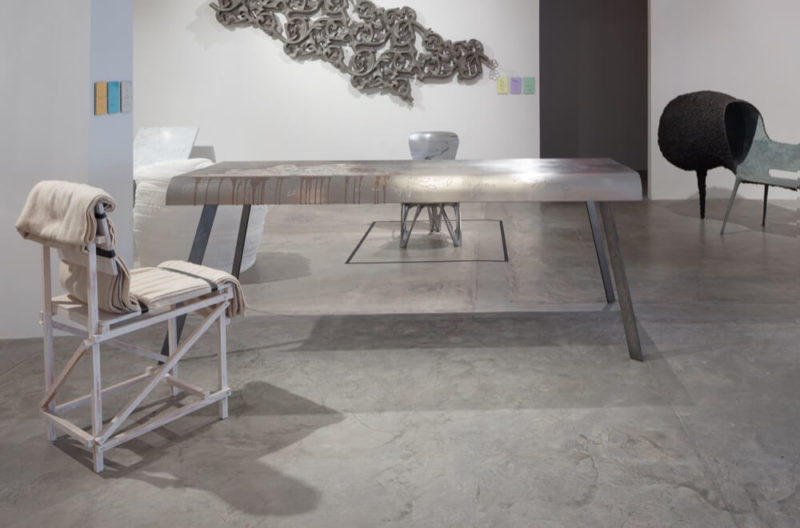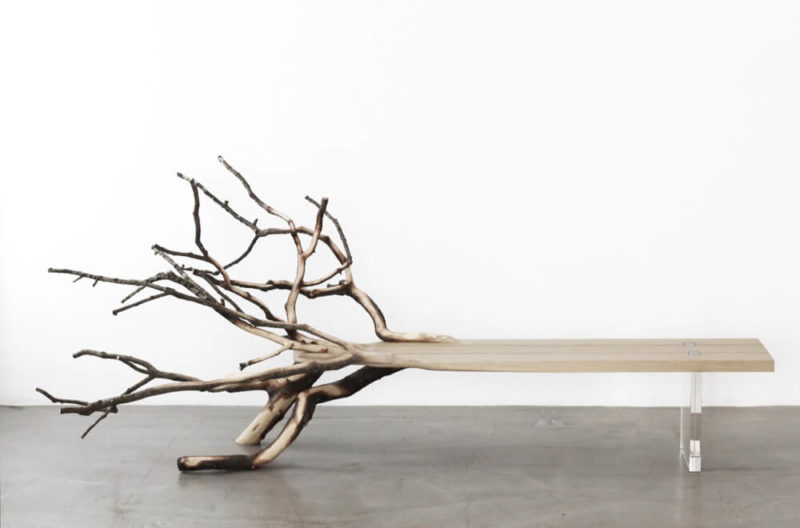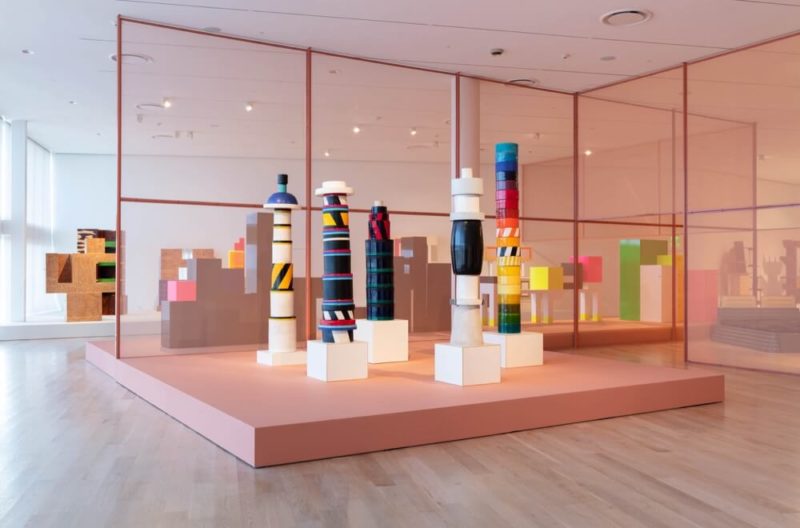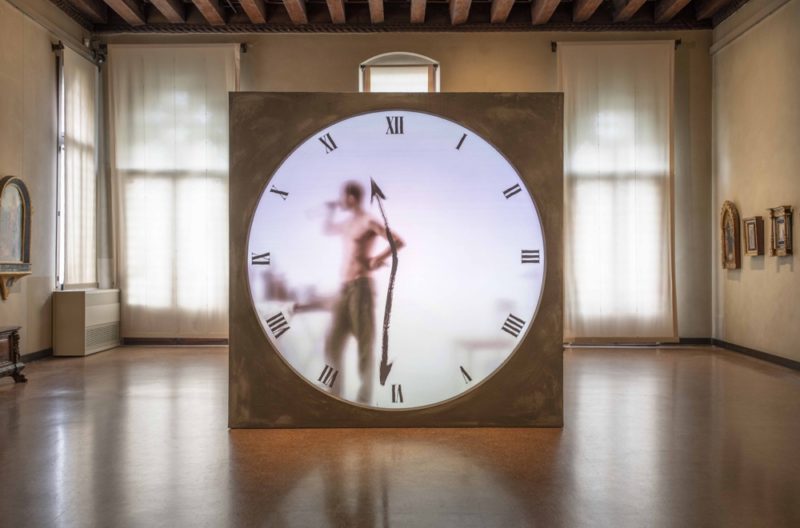Jeunes Artistes en Europe. Les Métamorphosis.
A sample of a new wave of young, cross-disciplinary European artists.
Fondation Cartier, Paris
4th April – 16th June, 2019
THE FONDATION CARTIER has pursued its philanthropic mission to raise public awareness of contemporary art for thirty-five years. For the last twenty-five years, its base has been an airy Jean Nouvel building in Paris. The latest exhibition spotlighted twenty-one young European artists who are transforming contemporary aesthetics by collaging, recycling and fragmenting materials. From design and sculpture to figurative painting, film and fashion, the heterogenous works reveal how these artists, born in the 1980s and 1990s, are transforming the codes of their chosen disciplines. Curator Thomas Delamarre’s team reviewed 1,000 portfolios and carried out research in twenty-nine countries to select the artists. “What guided our final selection was the way in which artists have related the notion of metamorphosis to current global issues,” he said.
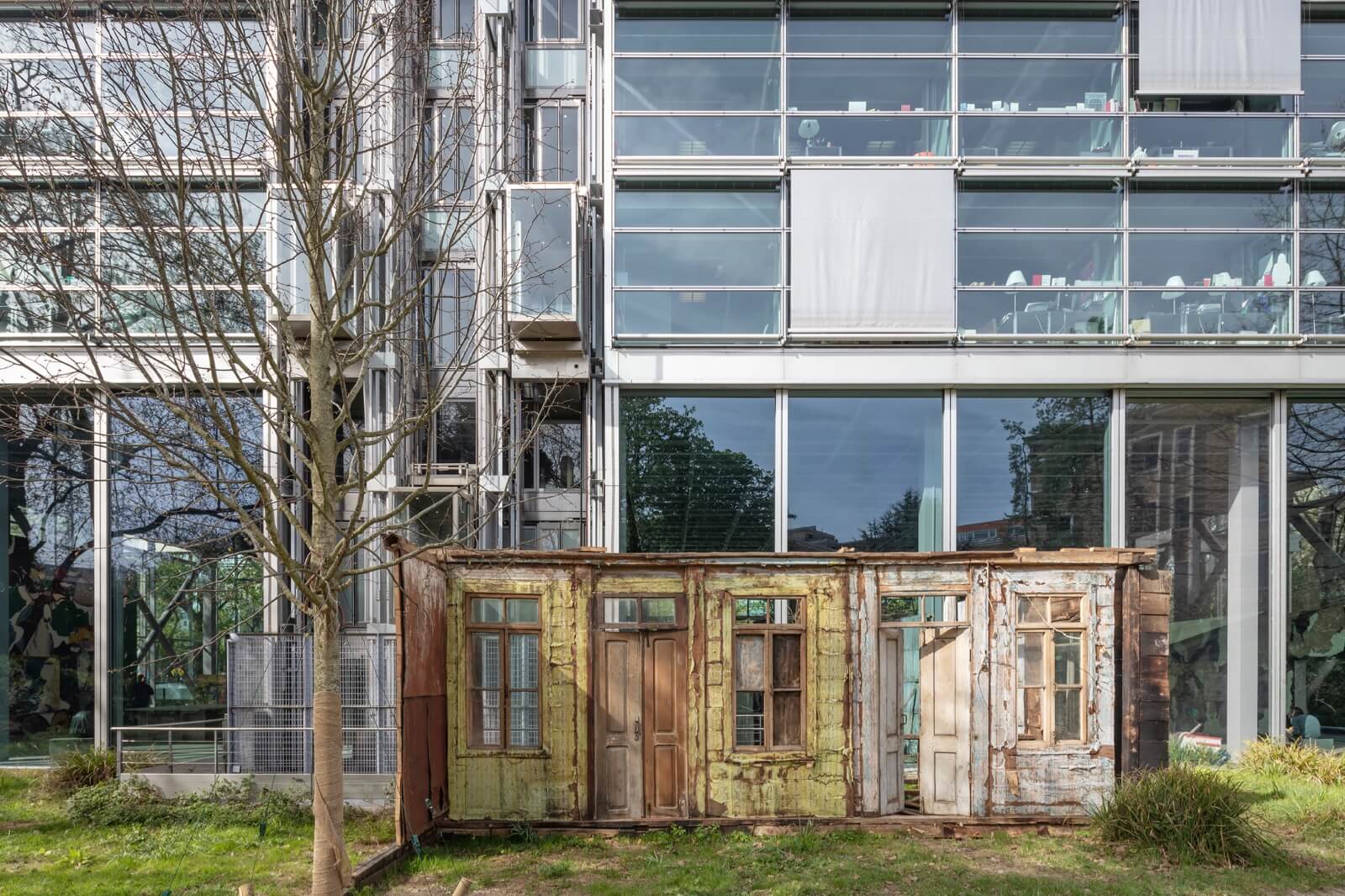
Nika Kutateladze, ‘Metamorphoses’, 2019
COURTESY: © Luc Boegly
The first room displayed a cabinet, chaise longue and chandelier by the 30-year-old Greek designer, Kostas Lambridis. ‘The Elemental Cabinet’ (2017) was his graduation project at Design Academy Eindhoven and reinterprets the ‘Badminton Cabinet’ (1720-1732). Made at the Grand Ducal workshops in Florence for the Duke of Beaufort, the latter was bought by Prince Hans-Adam II of Liechtenstein for £19m at Christie’s London in 2004. It is the most expensive 18th-century decorative work of art sold at auction. Lambridis travelled to Vienna where the ebony, gilt bronze and pietra dura cabinet is housed in the Liechtenstein Museum and decided to make a replica. “I wanted to find a balance between this sublime vanity and the artistic humility of the American artist Robert Rauschenberg, who would use any kind of material to make art,” Lambridis said.

Kostas Lambridis, ‘Elemental Cabinet’, 2017
COURTESY: © Kostas Lambridis / PHOTOGRAPH: © Yen-An Chen
After making a 3D model of ‘The Badminton Cabinet’, Lambridis categorised materials by weight, an idea inspired by how the Greek artist Jannis Kounellis gave importance to the weight of materials. Lambridis used minerals like ceramics, stone and concrete on the bottom layer of the legs, then metals, woods, plastics and finally textiles – the lightest material – on the top. While some elements were made with a CNC cutter, others were recycled and the textiles surrounding the clock were embroidered by his mother.
Similarly, Lambridis’ chaise longue, ‘The Elemental Daybed’ (2019), mixes references from the baroque era, iconic contemporary pieces such as Marc Newson’s ‘Lockheed Lounge’ (1990) and Charles and Ray Eames’ ‘Daybed’ (1986). Reflecting critically on how the daybed has become a luxurious item, Lambridis revisited it by hybridising humble materials like plastic.
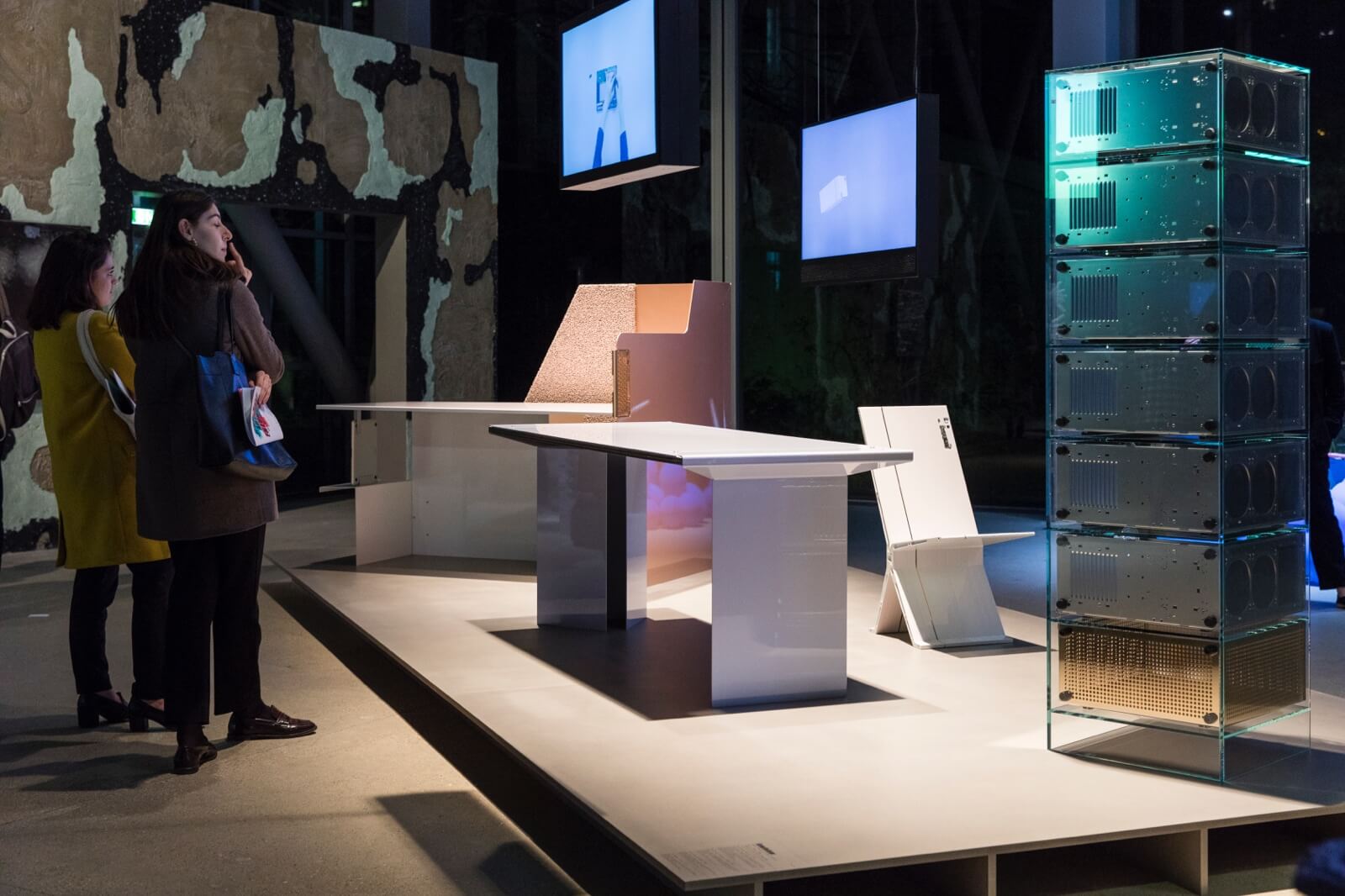
Formafantasma,‘Ore Streams’ selected work, 2017
COURTESY: © Thibaut Voisin
Meanwhile, Formafantasma (design duo Andrea Trimarchi and Simone Farresin) made pieces of office-like furniture using recycled electronic parts from a reseller in Amsterdam. The objects are part of Formafantasma’s ‘Ore Streams’ (2017-2019) investigation into the recycling of electronic waste, which was commissioned by the National Gallery of Victoria in Melbourne and the Triennale Milano. Stacked computer cases formed a filing cabinet while keyboards and mobile phone components appeared on a desk and chair. “Electronic waste is the fastest-growing waste stream at the moment,” Trimarchi said, “For most people, discarded electronic materials are trash. But for us, they’re materials in transformation. All the objects are painted in reflective paint and in some cases are coated in gold, which is extracted from the inner part of computers and mobile phones.” Certainly, the works suggested that electronic goods could be given a second life rather than be thrown away to pollute the planet. “One of the roles of designers nowadays is trying to understand the present in order to create a better future and that’s the aim of this project,” Trimarchi added.
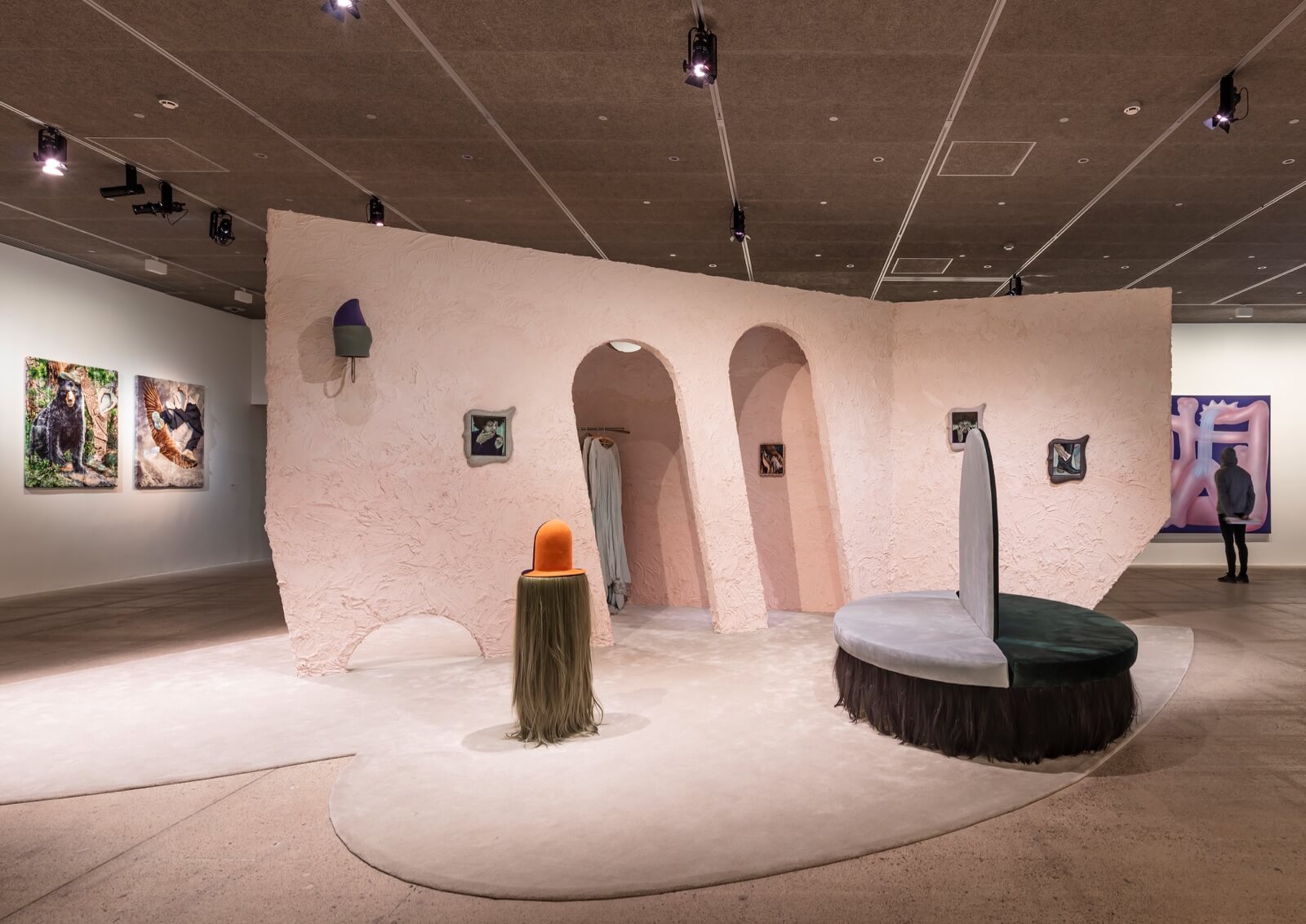
Installation view with works by Klára Hosnedlová
COURTESY: © Luc Boegly
The exhibition’s open-plan scenography was conceived by the French designer Benjamin Graindorge. His wall-mounted ‘edaLight’ from his ‘Akari Unfolded’ collection (2018), made from metal and black-and-white pleated paper, was a response to the Noguchi Museum in New York inviting him to reinterpret Isamu Noguchi’s paper lamps. Meanwhile, ‘Mirror Mirage’ from his ‘Morning Mist’ collection (2011), featuring three varyingly-sized mirrors screen-printed with images of clouds, which was presented against a cloudy, night-sky wallpaper, creates an atmospheric interaction with the lush vegetation behind Jean Nouvel’s glass architecture.
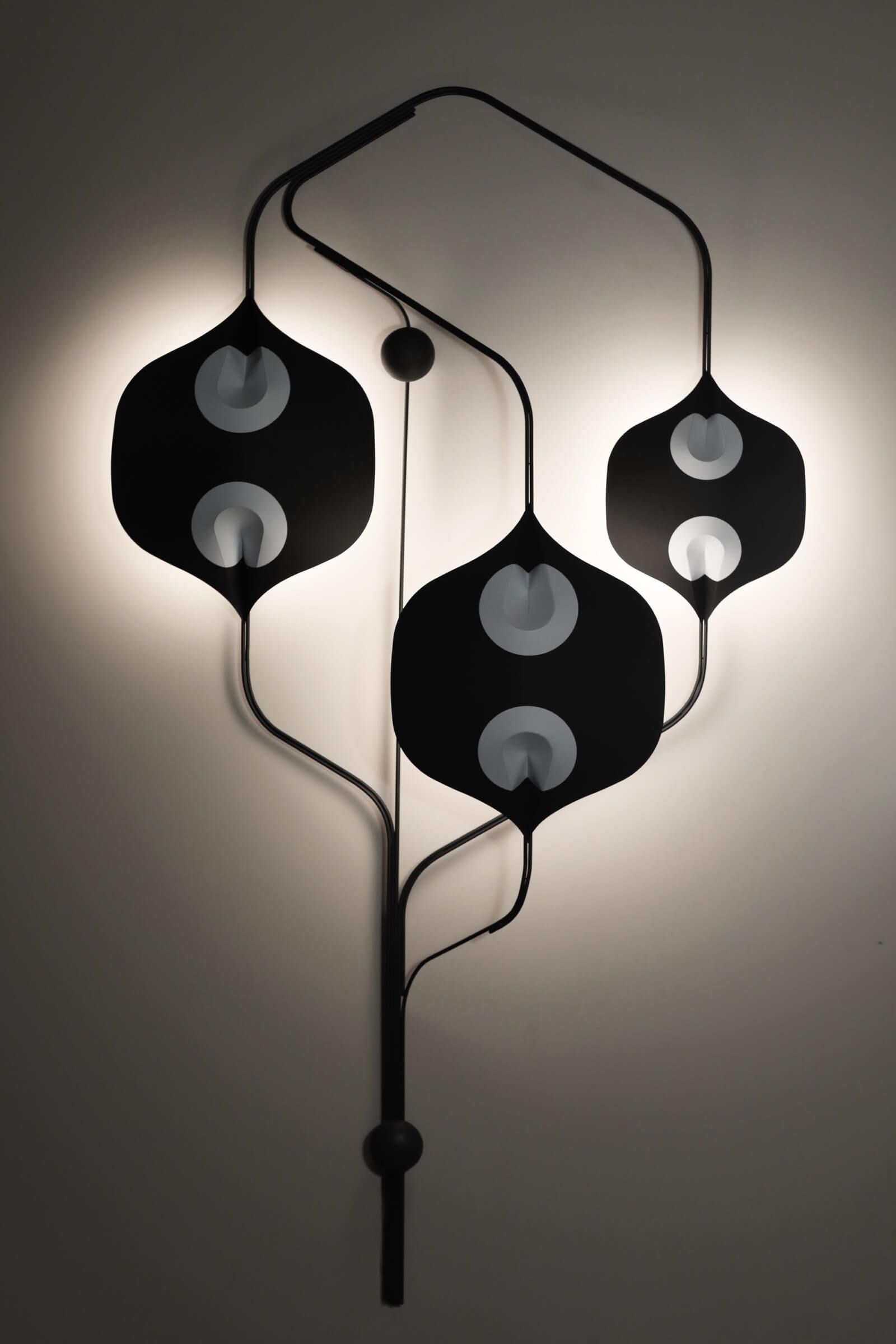
Benjamin Graindorge, ‘edaLight’, 2018
COURTESY: © YMER&MALTA / Benjamin Graindorge
Other strong points were the French artist Marion Verboom’s ‘Achronies’ sculptures (2019), the columns referencing ornamentation from Egyptian pyramids, Gothic cathedrals and Inca temples, and Georgian artist Nika Kutateladze’s installation of an abandoned house from his family’s native village. Transported by truck through six countries, the house had been reconstructed in two parts – inside the foundation and outside in the garden – and alluded to the impact of Georgia’s rural exodus.
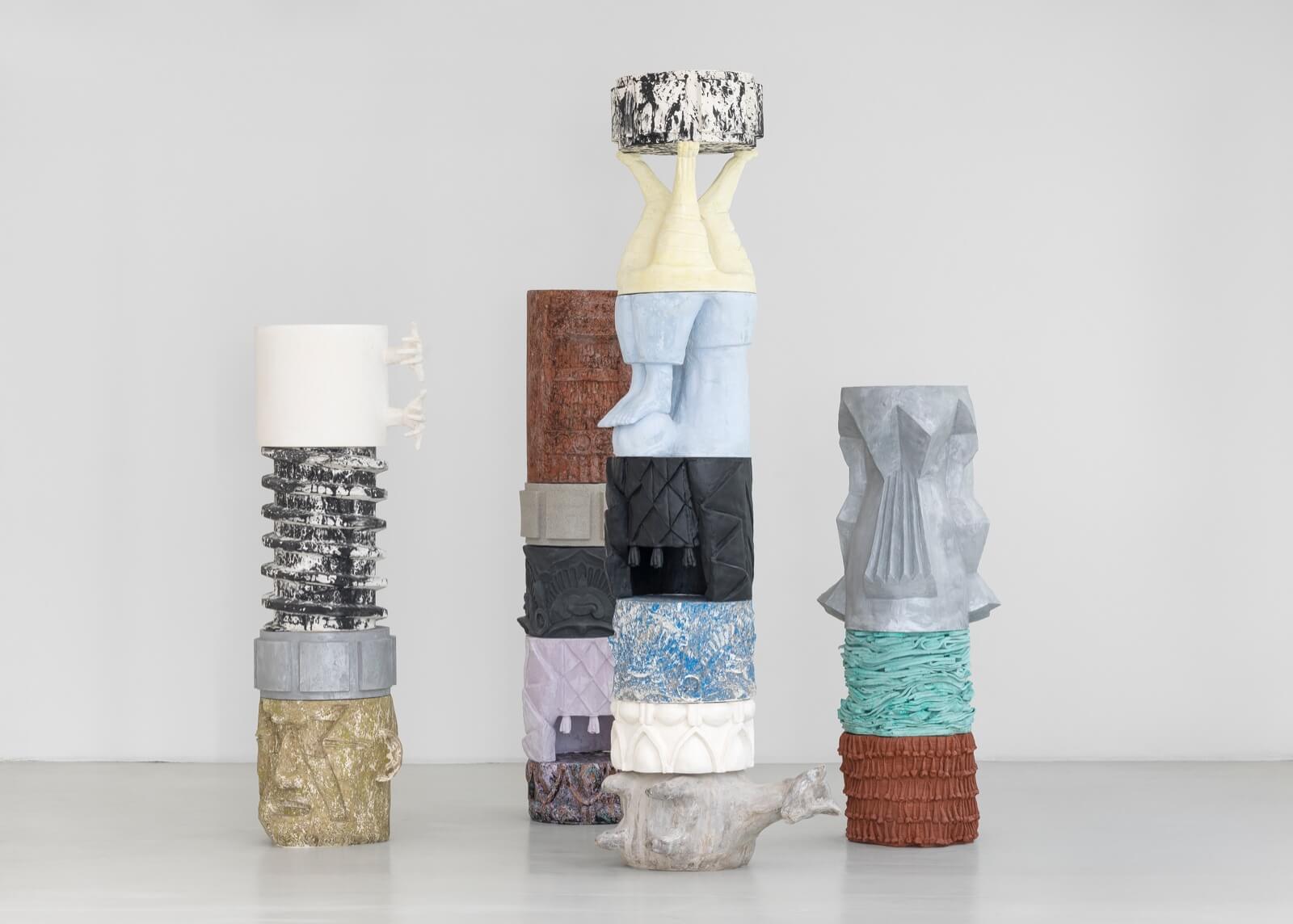
Marion Verboom, ‘Achronies’, 2017
COURTESY: © Marion Verboom, Adagp, Paris, 2019 / Galerie Jérôme Poggi, Paris / PHOTOGRAPH: © Nicolas Brasseur
Although the range of works was a mixed bag, in which paintings were not the highlight, the exhibition offered a perspective on how today’s artists are inventing new forms.
Fondation Cartier – contemporary art museum, Paris




